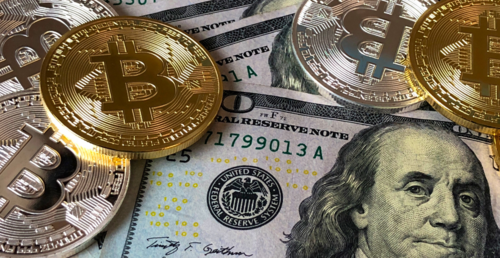
 Only 21 million bitcoins will ever exist. Why did Satoshi Nakamoto choose this number? There are at least two plausible explanations.
Only 21 million bitcoins will ever exist. Why did Satoshi Nakamoto choose this number? There are at least two plausible explanations.
Whoever Nakamoto is, it is clear that the goal was to create a decentralized economy. In a centralized economy, central banks can create money to help control the price of goods. However, in a fully decentralized economy, there is no central authority to create more money. A fixed supply means that Bitcoin is anti-inflationary. Bitcoin's inflation rate has been trending down steadily. In a centralized economy, inflation is inevitable. As a result, your money loses value over time.

We now know why there's a limit on the number of Bitcoin, but why 21 million? According to an email shared by early Bitcoin developer Mike Hearn, the figure was "an educated guess." Nakamoto said in the email, "My choice for the number of coins and distribution schedule was an educated guess. It was a difficult choice, because once the network is going, it’s locked in and we’re stuck with it. I wanted to pick something that would make prices similar to existing currencies, but without knowing the future, that’s very hard."
Nakamoto explained that he picked a number "in the middle" because it would work whether Bitcoin remained niche or became widespread. "I ended up picking something in the middle," the creator explained. "If Bitcoin remains a small niche, it’ll be worth less per unit than existing currencies. If you imagine it being used for some fraction of world commerce, then there’s only going to be 21 million coins for the whole world, so it would be worth much more per unit."
According to some users on the popular cryptocurrency forum StackExchange, Nakamoto may have chosen 21 million through some complicated math.
Like many other cryptocurrencies, Bitcoin (BTC) was designed around the principle of a finite supply. That means there’s a fixed upper limit on how many Bitcoin can ever come into existence.
In Bitcoin’s case, the upper limit was set by its creator, Satoshi Nakamoto, at exactly 21 million. For other cryptocurrencies, this cap can vary considerably—ranging from as low as 18.9 million for Monero (XMR), and for Dash, 45 Million for Hivecoin and to as high as 100 billion for the likes of XRP and Tron (TRX).
Bitcoin's limited supply is a huge advantage. It keeps the cryptocurrency scarce, theoretically ensuring that its value holds steady for years to come. It's for this reason that Bitcoin is often called "digital gold"; like gold, there's only a certain amount of Bitcoin in existence.

By limiting its maximum supply, and slowing the rate at which new Bitcoin come into existence, Satoshi intended each individual Bitcoin unit (known as a satoshi) to appreciate in value over time.
According to an email purportedly shared between Nakamoto and Bitcoin Core contributor Mike Hearn, Satoshi reasoned that if 21 million coins were to be used by some fraction of the world economy, 0.001 BTC (1 mBTC) could be worth around €1. This prediction came true back in 2013, when Bitcoin first broke through the €1,000 price point.
Although Satoshi compares the price of Bitcoin to the Euro in his email, some simple mathematics indicates he may have had a much grander vision for Bitcoin—better explaining why the 21 million maximum figure was chosen.
At the time of Bitcoin's creation, the entire world's money supply stood at approximately $21 trillion. This figure, known as the M1 money supply, is made up of the total value of all the physical money in the world, including cash, coins, travelers' checks, and more.
If Bitcoin were to grow to become the single world currency—replacing all those that the M1 figure is comprised of—then each BTC would be worth $1 million. Because there are 100 million satoshi in each Bitcoin, this would place the value of each satoshi at $0.01.
The fact that these numbers align so closely would be a remarkable coincidence, if it’s not intentional.

Although the M1 money supply replacement theory is perhaps the most plausible rationale for why Satoshi selected 21 million to be the cap for Bitcoin, there is another—somewhat simpler—possible explanation.
Looking at the parameters used to control Bitcoin's supply, it becomes clear that the 21 million BTC figure allows the network to ensure that blocks are mined in a regular timeframe (10 minutes). It also ensures that the amount of Bitcoin paid out to miners as block rewards decreases over time, as the maximum supply approaches its limit. As it turns out, the parameters Satoshi set for this inevitably lead to the production of a maximum of 21 million BTC.
The Bitcoin core code currently adjusts the mining difficulty to ensure that each new block is mined every 10 minutes on average, regardless of how much hash rate is pointed at the network. Based on this feature, a total of 210,000 blocks should be mined in each four-year cycle, after which the block reward is halved.
The first cycle saw 50 BTC minted per block; this was halved to 25 BTC/block in 2012, then again to 12.5 BTC/block in 2016. Following 2020’s halving, it currently sits at 6.25/BTC block.
If you extrapolate this forward, you will find that the sum of the block rewards for each cycle equals 100 (50 + 25 + 6.25 +3.125, etc). By multiplying this number by the 210,000 blocks/cycle figure, you arrive at the maximum possible supply of 21 million.
So, is Bitcoin’s supply cap a philosophical gesture, or the product of remorseless mathematical logic? Only Satoshi Nakamoto truly knows—and he (or she) isn’t telling.
Bitcoin price as for today is $ 34 321,00
Cryptocurrency is for everyone

NB >>To invest in crypto,click >> HERE
NB >> Join Markethive - a Huge Community of Crypto Entrepreneurs
The First Market Network Built on Blockchain click >> HERE
.png)
About: Andries vanTonder
Over 40 years selfemployed
He is a Serial Entrepreneur, an Enthusiastic supporter of Blockchain Technology and a Cryptocurrency Investor
Find me at my Markethive Profile Page | My Twitter Account | My Instagram Acount | and my Facebook Profile.
